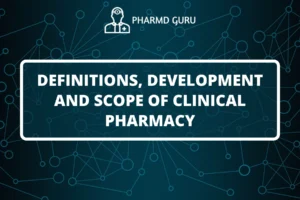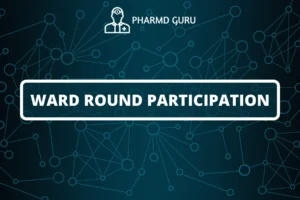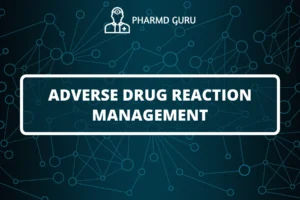Pharmacovigilance is a critical component of ensuring the safety and efficacy of medications. It plays a crucial role in the identification, assessment, understanding, and prevention of adverse effects or any other drug-related problems. This article explores the scope, definition, and aims of pharmacovigilance, shedding light on its significance in public health and patient safety.
SCROLL DOWN TO THE BOTTOM OF THE PAGE FOR ACTUAL NOTES
TABLE OF CONTENTS:
- Introduction
- Scope of Pharmacovigilance
- Definition of Pharmacovigilance
- Aims of Pharmacovigilance
- Importance in Public Health
- Collaborations and Regulatory Bodies
- Pharmacovigilance Process
1. Introduction
Pharmacovigilance is the science and activities related to the detection, assessment, understanding, and prevention of adverse effects or any other drug-related problems. It involves monitoring the safety and efficacy of medications throughout their lifecycle, from pre-marketing clinical trials to post-marketing surveillance.
2. Scope of Pharmacovigilance
The scope of pharmacovigilance encompasses the identification and evaluation of adverse drug reactions (ADRs), including both known and unknown risks associated with medications. It also involves the monitoring of medication errors, drug interactions, medication misuse and abuse, and the assessment of the benefit-risk profile of drugs.
3. Definition of Pharmacovigilance
Pharmacovigilance is defined as the science and activities related to the detection, assessment, understanding, and prevention of adverse effects or any other drug-related problems. It involves the collection, analysis, and interpretation of data from healthcare professionals, patients, regulatory authorities, and other stakeholders to ensure the safe and rational use of medications.
4. Aims of Pharmacovigilance
The primary aims of pharmacovigilance include:
- Detection and Monitoring: To identify and monitor adverse drug reactions and other drug-related problems to ensure early detection and timely intervention.
- Assessment and Evaluation: To assess the severity, frequency, and causality of adverse drug reactions, as well as the benefit-risk profile of medications.
- Understanding and Analysis: To understand the underlying mechanisms of adverse drug reactions, risk factors, and patient susceptibility.
- Prevention and Risk Minimization: To develop and implement strategies for preventing and minimizing the occurrence of adverse drug reactions, including the revision of drug labeling, contraindications, warnings, and precautions.
- Communication and Information Dissemination: To communicate safety information and recommendations to healthcare professionals, regulatory authorities, patients, and the public, promoting the safe and effective use of medications.
- Promotion of Rational Drug Use: To contribute to the rational use of medications by providing evidence-based information on drug safety and supporting regulatory decisions related to drug approval, withdrawal, or labeling changes.
5. Importance in Public Health
Pharmacovigilance is of paramount importance in public health for several reasons. It ensures that the benefits of medications outweigh their potential risks, safeguarding patient safety. By continuously monitoring and evaluating drug safety, pharmacovigilance contributes to the identification of new safety concerns and the prevention of medication-related harm. It also plays a crucial role in building trust and confidence in the healthcare system and regulatory processes.
6. Collaborations and Regulatory Bodies
Pharmacovigilance relies on collaborations and interactions between healthcare professionals, regulatory authorities, pharmaceutical companies, academia, and patients. Regulatory bodies, such as the World Health Organization (WHO) and national regulatory agencies, establish guidelines and regulations to govern pharmacovigilance practices and ensure the safety of medications.
7. Pharmacovigilance Process
The pharmacovigilance process involves various steps, including data collection, reporting, signal detection, data analysis, risk assessment, and risk management. Healthcare professionals and patients play a vital role in reporting adverse drug reactions and providing essential information for the evaluation of medication safety.
ACTUAL NOTES




